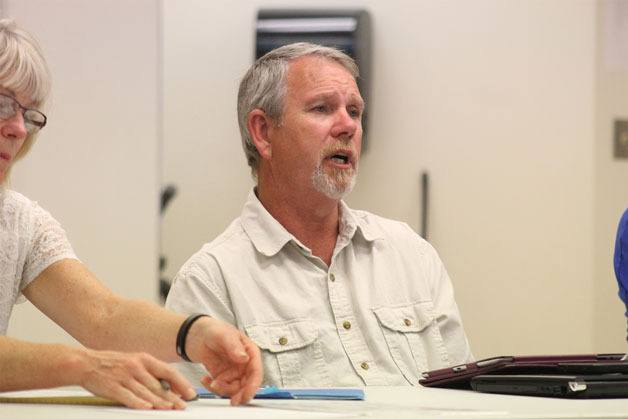The South Whidbey School Board approved a $20.1 million budget for the 2016-17 school year after a brief public hearing Wednesday night.
The budget is up $700,000 from the 2015-16 budget due to rises in teacher salaries and retirement benefits, Superintendent Jo Moccia said.
“It is well deserved, but a big part of it,” said Moccia, referring to the 10 percent salary increase over two years that teachers fought for last year.
The new budget also marks a $1.7 million increase in two years, according to school documents.
The district’s general fund for 2016-17 is $16.7 million, which is a slight increase from $16.5 million in the 2015-16 budget. Expenditures are also expected to rise to $20.1 million, up from $19.4 million last year.
The district’s $2.8 million capital projects fund is also up from $2.6 million.
Personnel costs makes up 84 percent of the district’s budget, totaling $13.9 million.
Assistant Superintendent of Business Dan Poolman presented the budget. He fielded only one question from the board: Director Julie Hadden wanted clarification on the definition of “teachers’ activities” in the expenditures portion of the budget.
“It’s basically what you’re going to find within a classroom, the expenditures for supplies and services within a classroom,” Poolman said. “It’s really the instructional piece of the budget.”
The district is projecting to spend $227,481 more in that category for a total of $10,019,979, which was the most significant change in expenditures.
Bill Carruthers of Clinton was the lone participant in the public hearing. He inquired about the total of the district’s fund balance, which is $998,019 or six percent of the total budget. Director Damian Greene said the fund balance is meant to act as insurance for emergency situations.
In a phone interview Thursday afternoon, Hadden commended Poolman for his work on the budget, which included having enough in reserves to support raises for teachers, and for keeping the district on track with its goals of making students career and college ready.
“There was really nothing there that was a red flag,” Hadden said.
Hadden said that reductions will be necessary in order for the district to combat declining enrollment over the last decade and half, which nets fewer monies from the state and led to the cuts of 6.5 teaching and administration positions this spring. Those reductions could include cutting discretionary programs and/or consolidating facility usage, with Hadden preferring the latter. Hadden said the district is facilities rich and that money can be saved in areas in which the district is not utilizing.
“To see empty classrooms, it shows we have wiggle room,” Hadden said.
Hadden added that her focus over the next year will be seeing that the district makes necessary reductions and that they do not affect classrooms.
By utilizing input from the community at a public input meeting in May, as well as future meetings scheduled for this year (Sept. 21, Oct. 19, Dec. 7) and Jan. 18 of next year, Hadden hopes a general consensus on how to make the district more efficient can be reached.
“They gave us a lot of insight to areas that we should be looking at,” Hadden said.



